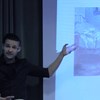drive
Asymmetries in punishment propensity may drive the civilizing process
Nature Human Behaviour, volume 2, pp. 148–155, doi:10.1038/s41562-017-0278-z Abstract Norms about hygiene and violence have both shown a tendency to become increasingly strict, in the sense that the han
Group differences in broadness of values may drive dynamics of public opinion on moral issues
Mathematical Social Sciences, 77, 1-8. Abstract Here we propose the idea that the success of an argument in favor of an issue position should depend on whether the argument resonates with the audience’s
Julia Driver: Schadenfreude
Professor Julia Driver, Dept. of Philosophy, Washington University in St. Louis.ABSTRACT One typical definition of "schadenfreude" is: "a feeling of enjoyment that comes from seeing or hearing about the
The sensitivity of respondent-driven sampling
2012. Journal of the Royal Statistical Society175:191-216.
The Connection Between Moral Positions and Moral Arguments Drives Opinion Change
Nature Human Behavior Abstract Liberals and conservatives often take opposing positions on moral issues. But what makes a moral position liberal or conservative? Why does public opinion tend to become m
The knowledge-management complex: From quality registries to national knowledge-driven management in Swedish health care governance
Politics & Policy Abstract This article analyzes the emergence of the Swedish “national system for knowledge-driven management.” We argue that the system is best understood as a meta-instrument that

Data-driven innovation i welfare services and public priority setting with Karim Jebari
Presentation from the workshop "AI and autonomous decision making" at the Institute for Futures Studies in Stockholm, October 2017.

Intrinsic motivation and outer sanctions as drivers of prosocial behaviour
Why do we cooperate? This project studies drivers of cooperation, generosity and pro social behaviour.
From Transfers to Individual Responsibility: Implications for Savings and Capital Accumulation in Taiwan and the United States
A demographically realistic model incorporating life cycle saving motives is used to simulate effects of changing a transfer-based old-age support to a funded system, applied to the cases of Taiwan an

Using impure altruism to promote pro-environmental behavior
Is it possible to nudge people into more environmentally friendly behaviour using impure altruism as a driver?








